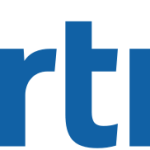- 産業: Consulting
- Number of terms: 1807
- Number of blossaries: 2
- Company Profile:
Gartner delivers technology research to global technology business leaders to make informed decisions on key initiatives.
Gartner defines Pattern-Based Strategy as the discipline that enables business leaders to seek, amplify, examine and exploit new business patterns. A business pattern is a set of recurring and/or related elements (business activities, events, weak or strong signals) that indicates a business opportunity or threat. A weak or strong signal is a piece of information, an activity, and/or an event that indicates an impending change that might have an impact on your business pattern. The term “business pattern framework” refers to an organization’s focus on and its investment in a balanced diversity of business activities (in the defined, creative, collective and exceptions categories) that enable it to lead and respond to weak and strong signals of change (opportunity or threat). The aim of business pattern recognition is to understand how elements (activities, events, objects and information) may form new patterns that represent an opportunity for innovation or a threat of disruption to business operations or strategy.
Industry:Technology
A system that enrolls or assigns patients to interventions across the continuum of health and illness. It includes wellness exams and routine screenings, utilization reviews, event focus, short-term case management, and the management of long-term chronic conditions.
Industry:Technology
Partner relationship management (PRM) enables organizations with indirect sales channels (such as agents, brokers, dealers, distributors and value-added resellers (VARs)) to more effectively and efficiently manage activities related to sales, lead management, deal registration and opportunity management.
Industry:Technology
This segment includes service-focused partner relationship management applications designed to improve an enterprise’s ability to market, sell and service end customers through channel partners. Key components include entitlement management, order management, service-level management and material reverse logistics.
Industry:Technology
Applications can be broken into three logical parts — presentation, logic and data. These are areas in which the program can be separated to facilitate execution of each logical piece on a different machine. Each segment is known as a partition. For example, the thin-client Web model requires that interface presentation be handled by the browser, application logic by the Web server and other application servers, and data by a database server. Developers are responsible for determining where the separation occurs.
Industry:Technology
Encryption and delivery of only those pages requested or those that the requester is allowed to see. A certificate server only releases the required certificate when an authorized user makes a request. Using PDE, each page of the document is encrypted and associated with a unique security certificate, allowing for selective retrieval.
Industry:Technology
The solution of a single problem across more than one processor. Little parallel processing is done today outside of research laboratories, because it is difficult to decompose tasks into independent parts, and the compiler technology does not yet exist that will extensively parallelize applications code.
Industry:Technology
Parallel Network File System (pNFS) is an emerging industry standard for parallel storage input/output (I/O), which is an optional feature of Network File System (NFS) v.4.1. The new technology requires a pNFS client and a pNFS server. The pNFS server manages file metadata and communicates a file layout map to the client, and the client performs direct storage I/O based on the layout. The storage access protocol can be based on files, blocks or objects.
Industry:Technology
A parabolic trough is a type of concentrated solar power (CSP) system. Long, curved mirrors arranged in a line concentrate sunlight on pipes located at the mirrors’ focal center. These pipes run down the length of the trough and contain an oil that is heated by the concentrated sunlight. This oil flows through the pipes to a power plant, where it boils water. The resulting steam produces electricity in a conventional steam generator. During the course of the day, a motor rotates the mirrors to track the position of the sun. To limit intermittency and improve dispatch capability, these systems may have molten salt storage or a co-firing natural gas system.
Industry:Technology
This describes the maximum paper size/dimension a device can print on. It includes the following:
• A3/A2 paper size — This category includes printers with the capability of printing paper between A3 (U.S. B) size and A2 (U.S. C) size.
• A3F paper size — This category includes printers with the capability of printing 297 mm/11.7-inch width continuous or fanfold form.
• A4 paper size — This category includes printers with the capability of printing A4 (U.S. A) paper.
• A4F paper size — This category includes printers with the capability of printing 210 mm/8.5-inch width continuous or fanfold form.
• A5 paper size — This category includes printers with the capability of printing A5 (U.S. A) paper.
• A6 paper size — This category includes printers with the capability of printing A6 (U.S. size 4 x 6) paper.
Industry:Technology
